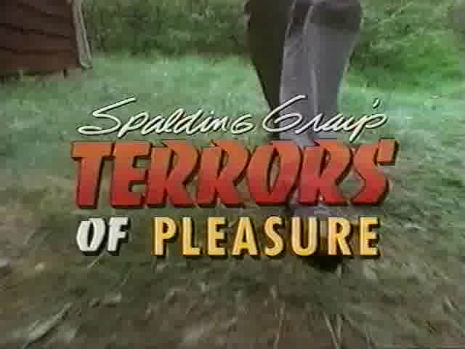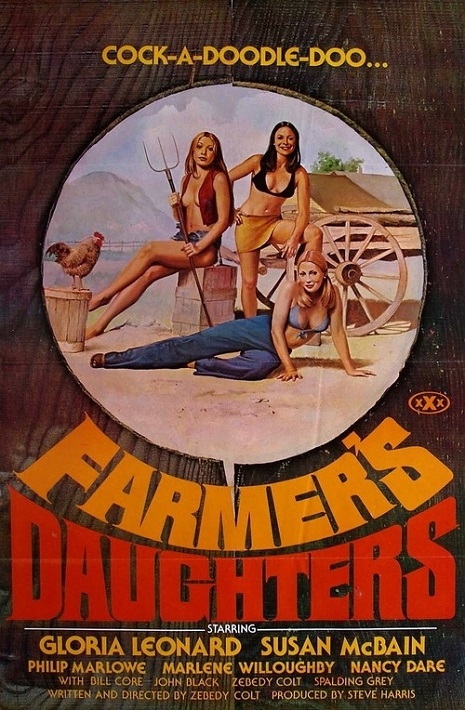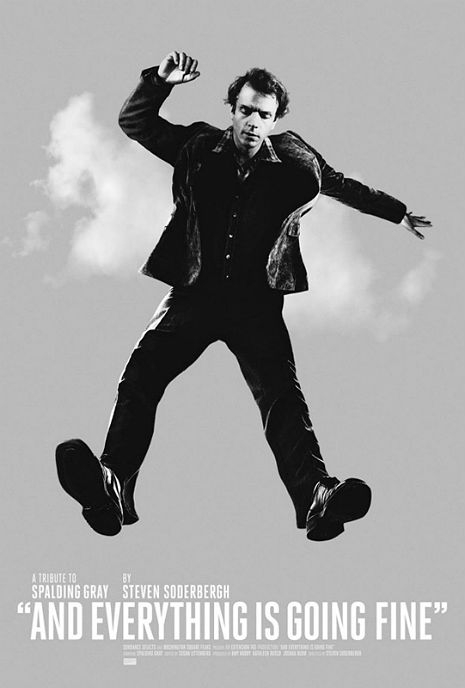
I was re-watching And Everything Is Going Fine the other day, Steven Soderbergh’s touching tribute to Spalding Gray, and it made me happy and sad all over again. So many of Gray’s monologue works are hard to get ahold of, especially the early ones, which may literally not exist anywhere. It got me hunting around for whatever I could find on YouTube, and I discovered a pretty solid Spalding Gray monologue movie I hadn’t heard of before.
Terrors of Pleasure has the distinction of being the other monologue that Spalding Gray performed at the Mitzi E. Newhouse Theater at Lincoln Center in 1986—it alternated with the far better known Swimming to Cambodia, which was filmed by Jonathan Demme as a movie for release in 1987. That movie was for many people the “gateway drug,” if you will, to the endlessly entertaining world of the New England WASP neurotic who before then had toiled in the downtown performance scene for quite a while with experimental theater outfits such as the Wooster Group. Afterwards his filmed monologues such as Monster in a Box and Gray’s Anatomy became much better known than, say, Sex and Death to the Age 14 or 47 Beds. (Like Swimming to Cambodia, Terrors of Pleasure could be considered a 1986 monologue that was released in 1987.)
This movie of Terrors of Pleasure is an odd duck. Directed by Thomas Schlamme (who later became more prominent as a key collaborator of Aaron Sorkin’s), it features a technique of filming brief vignettes (with hired actors, location scouts, the whole deal) of the story Gray is telling, which is primarily about the misadventures Gray and his longtime girlfriend Renee Shafransky invite when they impulsively buy a small cabin in a rural outpost near New York City (although there is a significant tangent of Gray auditioning to co-star opposite Farrah Fawcett in a movie).

Terrors of Pleasure is very funny indeed—it might be Gray’s funniest, hard to tell. At the core of the narrative about the cabin is an audio recording, played by Gray with a boombox, of the seller of the house attempting to strong-arm Gray into buying—it’s an amazing clip but one wonders if it was real, a question that maybe too few have asked in connection with Gray’s monologues. I suspect that a lot of them were pretty far from literally true even as they probably remained scrupulously true in a psychological sense. The recent troubles of performance artist Mike Daisey, whom I’ve seen perform several times (I saw Gray do his thing twice), haven’t really raised similar questions about Gray’s work—although the filmed clips in Terrors of Pleasure very much expose the absurdity of many of his stories. The literalization of actually seeing the characters of his stories hectoring him or intoning their ridiculous utterances should at least give the skeptical viewer pause.
Two other quick things that are odd about Terrors of Pleasure—the laugh track, which I suspect was taken directly from the audience but was merely amplified, is a choice that wouldn’t be made the same way today, we can be certain of that. And for some reason the monologues ends almost mid-sentence. It doesn’t cohere to an end and then fade out or anything, it pretty much just cuts to a “Directed by” screen for Schlamme, who apparently was the one who made the weird decision to cut it off so abruptly. The YouTube video matches the length of the official release, so that isn’t the problem.







